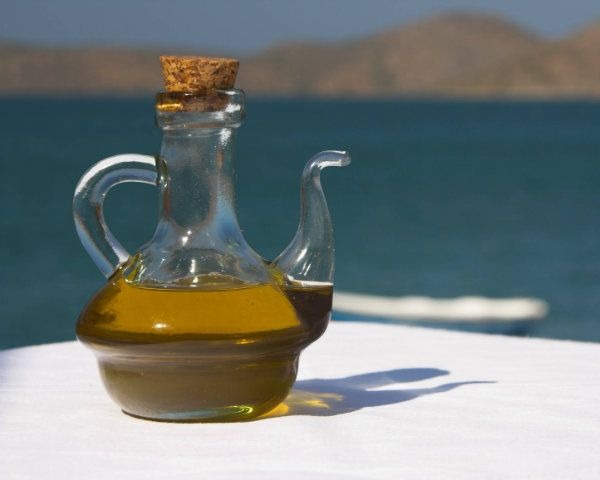The Murky Truth Behind Olive Oil
No matter your level of culinary talent, you likely know that there's a sizable distinction between that innocuous bottle of vegetable oil – the everyman's shortening, and the golden bottle of olive oil reserved for adding some depth of flavor to your dish. A new bottle of the latter is more expensive and handled with greater flourish. It might sting, then, when you discover that the lovely liquid isn't necessarily as straightforward as you were made to believe.
Illustrator Nicholas Blechman deftly draws out the truth in his recent slideshow for The New York Times Op-Ed section, Extra Virgin Suicide: The Adulteration of Olive Oil, an informative illustration is based on the research of Tom Mueller, author of the blog Truth in Olive Oil, and the 2012 book Extra Virginity: The Sublime and Scandalous World of Olive Oil.
For starters, according to Mueller's findings, the majority of what is labeled Italian olive oil is not from Italy. The olives come from nearby countries like Spain, Tunisia, and Morocco — so far, a minor adjustment. The olives are brought to the mill to be cleaned and pressed, and the oil is pumped into a tanker, for transport to Italy. Here's where things supposedly get murky.
In the same port where the true olive oil awaits, smugglers deliver large shipments of super cheap oils, like soybean and canola. The real olive oil is said to be mixed with lots of the cheap stuff, and then infused with beta-carotene to mask the flavor, and chlorophyll to improve the color. In some cases, the olive oil is mixed with colza oil, which is primarily used as a lubricant for machinery. That stuff is what sometimes gets labeled "extra-virgin" Italian olive oil, though as we know now, it may be neither. A widely cited 2010 study of supermarket extra-virgin olive oils led by Dan Flynn, executive director of the UC Davis Olive Center, found that 69% of imported olive oils (out of 14 samples) and 10% of California olive oils (out of five samples) did not meet the standards for extra-virgin olive oil, though they were labeled as such.
In Italy, a special branch of the Carabinieri (the national military police) take on the curious task of keeping the cheap substitutes out of the industry, raiding oil refineries. But the chase often stops cold there — producers of the phony goods are often connected to high-ranking political officials, and thus escape punishment. The final stain in this whole scandal though, is an enduring one: all these sleazy dealings have considerably cut the prices of olive oil around the world. In essence, the shady practices are causing the impure business to collapse in on itself, and its days are (we hope) numbered.
For those of you purists who want to avoid being duped, it's tricky, but not impossible. A lot of factors go into controlling the quality of any sample, like when the olives were harvested, how they were treated during processing, and even the bottle used for storage. Even within a particular grade, there's plenty of room for slick moves. To help you find the real deal, here's a very helpful slideshow.
